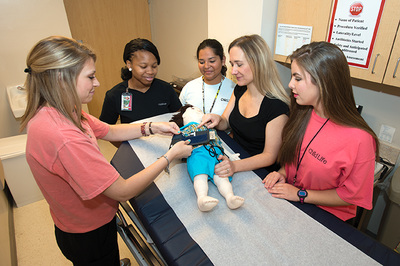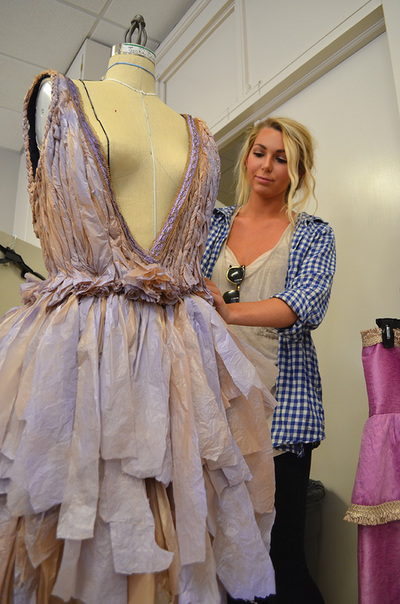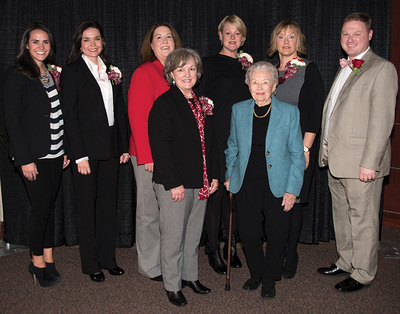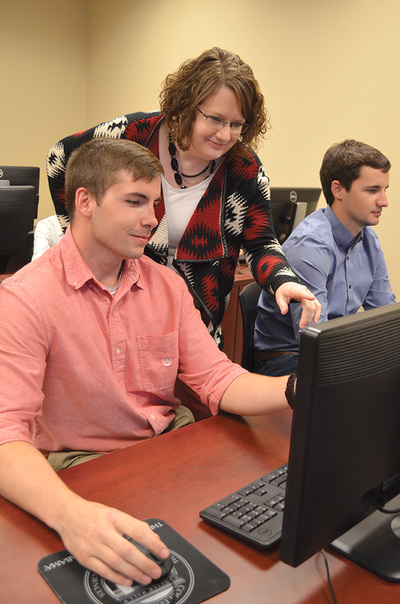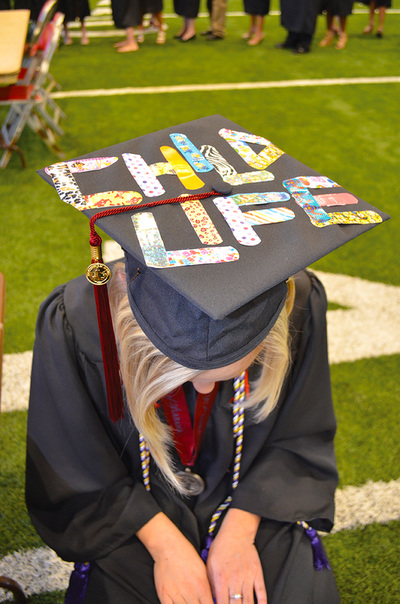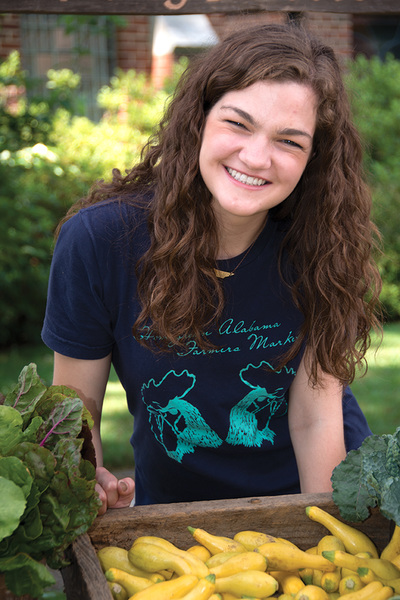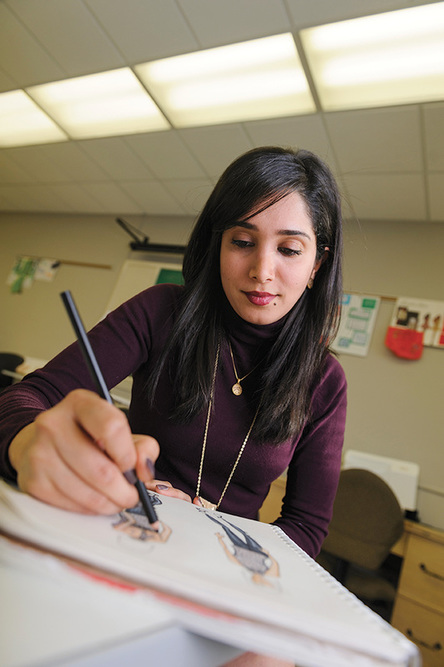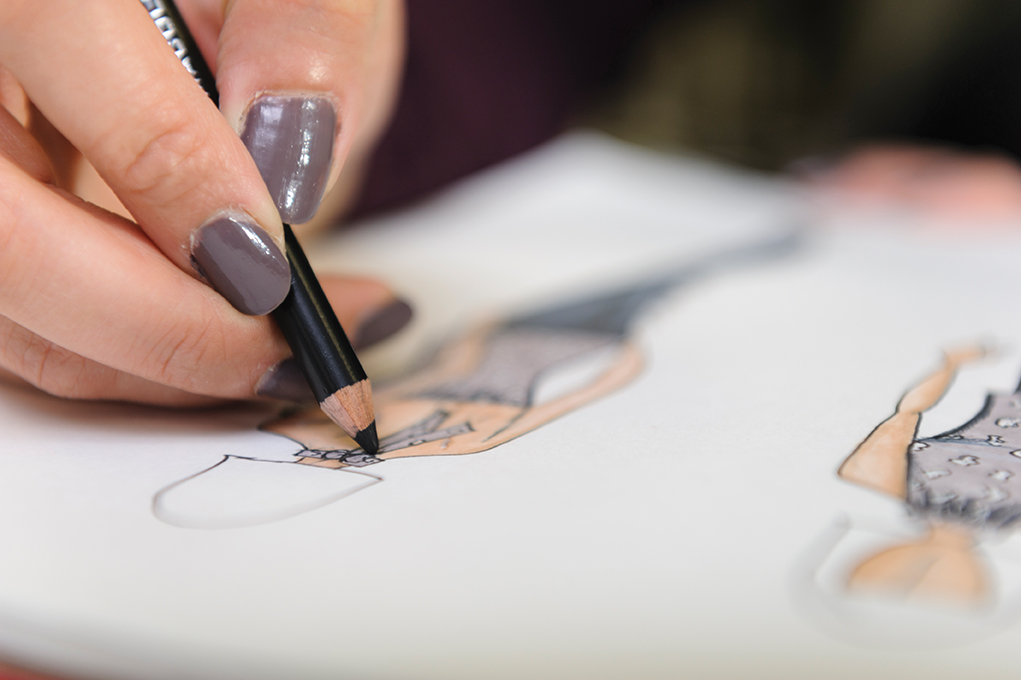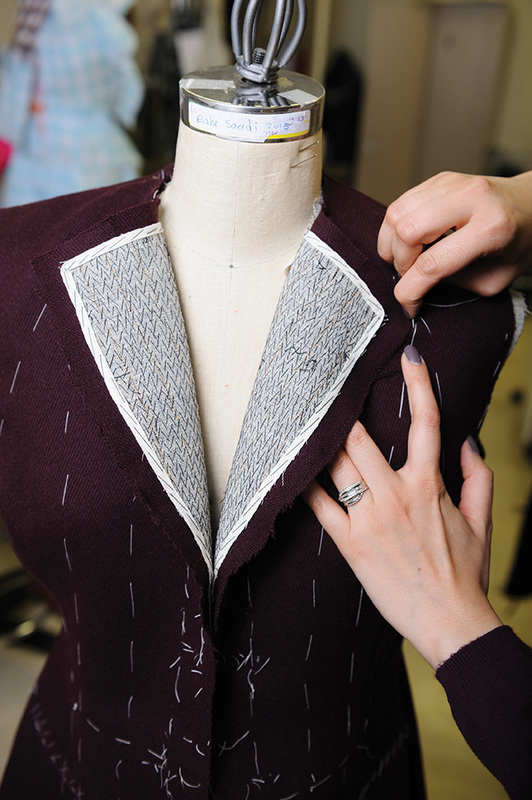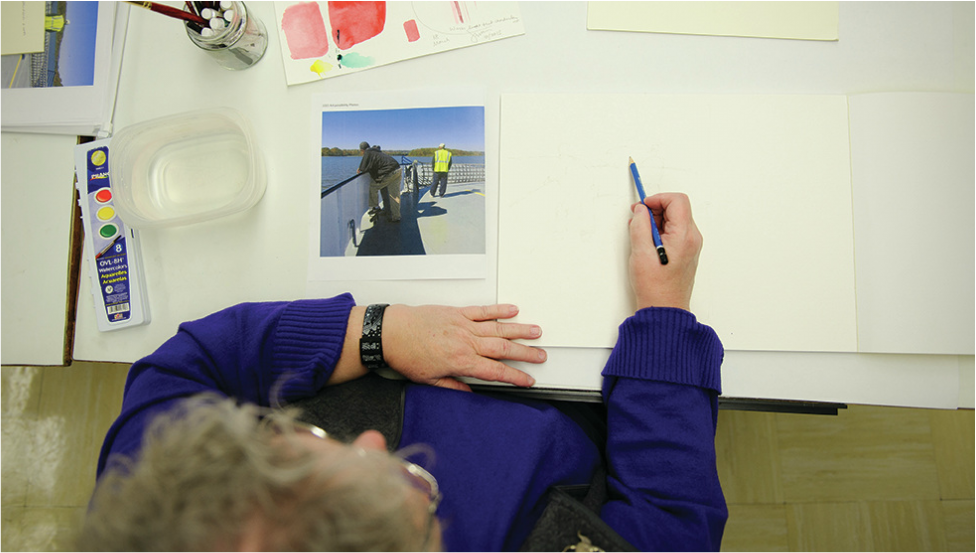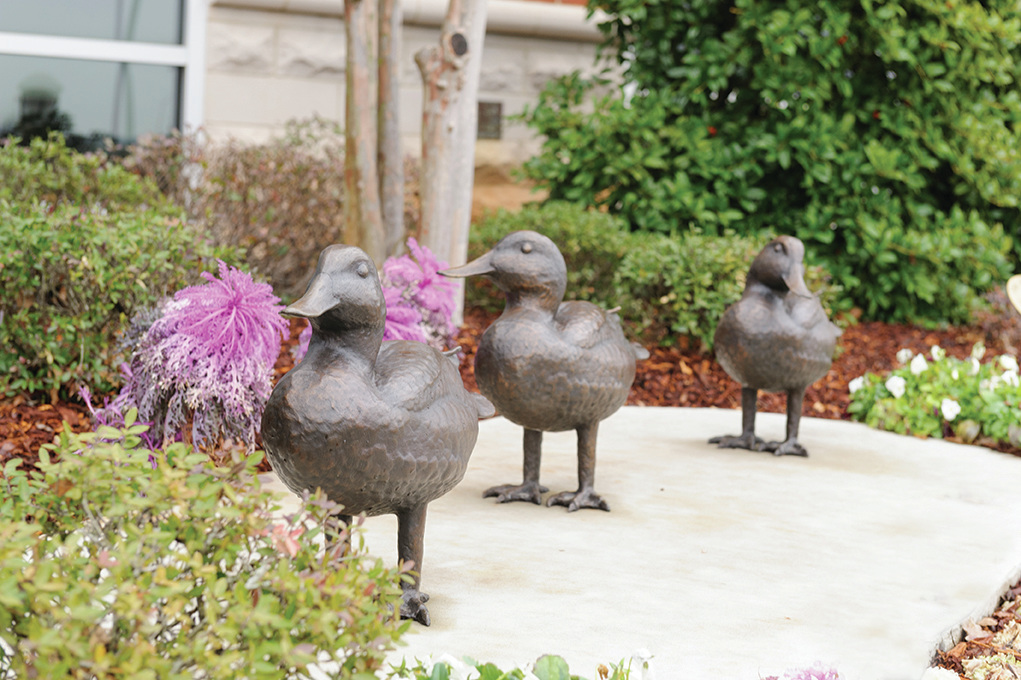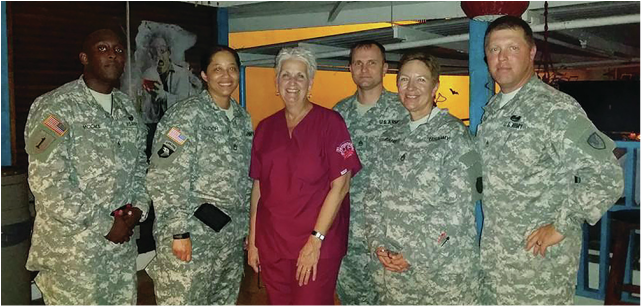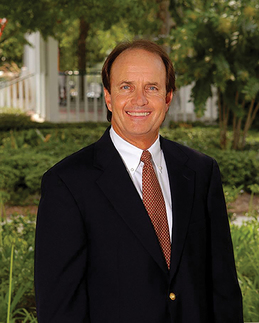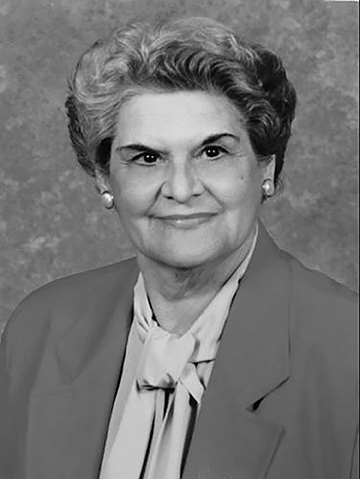 Doris Burton came to the College of Human Environmental Sciences in 1949, where she established the interior design department, and served as its chair and taught until she retired in 1986. While here, she pioneered the establishment of accreditation for interior design programs across the U.S. She chaired the New York-based accrediting agency, the Foundation for Interior Design Education Research, and The University of Alabama was accredited under her leadership in 1980. Her work in academic accreditation led the state of Alabama to become the first in the nation to require and set standards for professional licensure in 1982. Burton’s students remember her as a generous mentor, who demanded excellence and instilled in them the importance of service in the organizations that set the standards for excellence in the profession. She remained interested and available to her students long after they graduated, always encouraging them to go further and reach higher in their careers. Burton died in September 2014. She is remembered with deep appreciation. Memorial gifts may be directed to the Doris Burton Endowed Interior Design Scholarship at The University of Alabama, attn: Amy Parton, College of Human Environmental Sciences, Box 870158, Tuscaloosa, AL 35467.
The works of internationally acclaimed sculptor Frank Fleming, which are part of public and private collections around the world, include a growing cast of fanciful characters in the sculpture garden of the Child Development Research Center at The University of Alabama.
Fleming, a native of Marion County, Alabama, creates fantastical characters drawn from nature and his own rich imagination and crafts them in bronze. The works’ durability and whimsy make them perfect companions for the children at the CDRC. Fleming’s latest installment in the garden is a family of ducks named Judy, Milla and Amy. They join the larger-than-life Peter the Rabbit, Frank the Frog and John the Turtle, which were already in the garden. All nestle in the shrubs just steps away from the center’s entrance, greeting the children as they arrive each morning. Fleming, who was born in 1940, suffered from a speech impediment that kept him mute and isolated for most of his childhood. Yet he credits those childhood challenges and his rural upbringing for his love of nature and the close observations that later informed his art. Eventually the artist overcame his difficulties with speech through years of intensive therapy. His interest in creating art grew in college, and he earned a bachelor’s degree in art from Florence State College (now the University of North Alabama) in 1962 and a master’s in fine arts from The University of Alabama in 1973. Although Fleming’s best- known work is “The Storyteller,” located in Birmingham, his sculptures appear in collections from the Smithsonian American Art Museum to galleries in New York and France. In 2009, Dean Milla Boschung commissioned Fleming to create the first works for the CDRC, which were given on behalf of John L. and Margaret Rhoads. On the ground in Liberia’s fight against Ebola, Zandrea Landor is completing her CHES degree.
Zandrea Landor is earning her financial planning degree from the other side of the world. Serving in the U.S. Army, she was deployed to Africa last October to assist with the Ebola challenge. She and her unit provide support for the humanitarian mission. They repair airport runways so that critical supplies can be delivered and provide building materials and construction services for Ebola Treatment Units. If that sounds like a full-time effort, consider that Landor is also taking three CHES online courses for the spring semester. Before her deployment, she planned to complete her online education in December 2015, and she decided to keep pushing toward that goal. CHES offers a variety of undergraduate and graduate programs online, including the consumer sciences concentration in family financial planning and counseling. Landor believes everything happens for a reason. “All of the local people here are very grateful to us for coming to help their country,” she says. “It is very poor and makes me realize that we have no reason to complain about anything.” She is also a loyal Crimson Tide fan. She wrote to online professor Eve Pentecost that she and her “Roll Tide buddies” stayed up until 5 a.m. watching the Iron Bowl and caught the Sugar Bowl when it aired at 2:30 a.m. 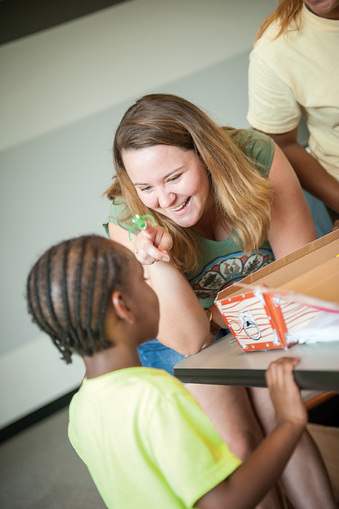 True leadership requires a commitment to serving one’s community. CHES students learn and experience that when they take the course Leadership Development through Service taught by Star Bloom. As part of the course, the students volunteer at Al’s Pals, a program that Bloom founded and directs. Launched in 2011, the after-school mentorship program pairs UA college volunteers with at-risk elementary school students. Each volunteer meets with the same child twice a week throughout the semester, assisting with homework and skill building and providing recreational and enrichment activities. Al’s Pals began with 30 school children and 60 mentors and now has 500 mentors who volunteer at three elementary schools and the McKenzie Court Community Center in Tuscaloosa. Last fall, the mentors logged 14,000 hours of service. “The program is a success because this is a volunteer experience where you see that one person really can make a difference. You see the children’s grades and school attendance go up. Perhaps more importantly, their attitude toward school and their social skills improve, and behavioral referrals go down,” says Bloom. In Bloom’s course, students learn to develop leadership skills and practice them through mentoring. The training for Al’s Pals leaders follows the ideas taught and tested in the CHES course. “There are no initiatives in the program that are not first tested in class,” Bloom says. For example, Bloom’s students learn that research shows a relationship between gratitude and resilience, so they write a gratitude letter. The mentors then teach the children to articulate what they’re grateful for, much of which tends to be school-related, like being with friends, liking their teachers or liking activities. The mentors see the children begin to develop a strong appreciation for school. The gratitude they develop translates to resilience as they face difficulties in other areas of their lives. Each child in the program has two mentors. As the relationships grow, often the mentors choose to renew their commitments beyond one semester. Before mentoring, volunteers go through extensive training. An organized network of experienced student leaders and graduate assistants leads the program. Bloom advises the mentors to set their expectations for their students high. “The college mentor’s expectations will probably be the highest expectations in the child’s life,” she says. “When the children spend time and connect with their college mentor, they can see a brighter future for themselves. “In order to lead, you must first realize that you really can make a difference. Once you’ve served and have seen that one person can make a difference, it’s much harder to just let someone else do the job.” 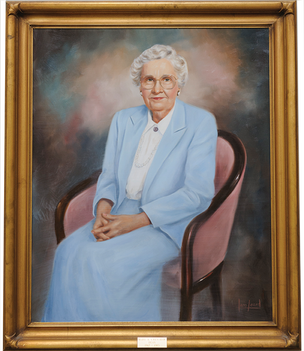 Dr. Mary A. Crenshaw came to The University of Alabama in 1967 as dean of the School of Home Economics (now CHES), a position she held until her retirement in 1983. She came to Tuscaloosa from Indiana University in Bloomington, where she chaired the department of home economics and taught in the area of food and nutrition. She held a bachelor’s degree from Western Kentucky State University, a master’s from the University of Tennessee and a doctorate from Iowa State University. During Dean Crenshaw’s tenure at The University of Alabama, the School of Home Economics grew to include the department of consumer sciences. The School annexed Adams Hall to house the new department, along with portions of the interior design program and the child development program’s infant lab. Under Dean Crenshaw’s leadership, a number of programs received critical accreditations, and the School celebrated its 50th anniversary. Many CHES alumni remember Dean Crenshaw as an exemplary leader and mentor who inspired others simply by the way she worked and lived. She was dedicated to students and tireless in pursuing what she thought was best for them and in motivating them toward excellence and achievement. She was pragmatic, caring and gracious, and brought an understated elegance to the role of dean. She spoke directly and emphatically, rarely leaving any doubt about what she meant and winning the respect of students, faculty and colleagues across the campus and around the country. Throughout her life, Dean Crenshaw retained her love for the state of Kentucky, where she was born in 1919. She began her career teaching high school home economics in the Kentucky public schools. After earning her master’s degree, she worked as a nutritionist for the Kentucky State Department of Health in Louisville and then became an associate professor at Murray State University in Murray, Kentucky. When she retired, she returned to her home state and lived there until she died in October 2014. Here are some of the remembrances posted on the CHES Facebook page after Dean Crenshaw’s death: “The interview to defend my senior position paper prior to graduation was a game-changer. She made me feel like I could accomplish anything.” “When I first met her, I was a little scared of her, but I later saw what a good sense of humor she had and how much she cared for all of us students.” “She modeled leadership in all areas of her life.” “She was always there with a smile and a word.” “She was so accomplished, yet unpretentious.” “She was a natural leader, with a way of looking you straight in the eye that made you know you needed to listen.” “She promoted academic excellence in a firm yet kind way.” Memorial gifts may be directed to The Mary A. Crenshaw Endowed Research Fund, University of Alabama, attn: Amy Parton, College of Human Environmental Sciences, Box 870158, Tuscaloosa, AL, 35487
Sleep - Simple Secret to SuccessLying awake at night is not just inconvenient. Sleep deprivation is a significant public health issue, with serious consequences. Lack of sleep is linked to obesity, hypertension, diabetes, reduced learning and memory ability, impaired judgment and dangerous driving. One-third of us suffer from sleep deprivation, and research shows that for college students that number — and the stakes — are even higher.
Dr. Adam Knowlden, professor of health science at The University of Alabama, recently surveyed college students about their sleep behaviors and found that as many as 60 percent are sleep-deprived, compared to 33 percent of the general population. Why? It is not all about staying up all night partying and hanging out with friends, Knowlden’s research shows. “The bigger issues are unrealistic expectations and poor time-management skills,” he says. “College students have a lot of studying to do, and most of them don’t realize how much time that takes,” he says. “A common formula is that students should set aside six to nine hours a week to study for a typical three-hour course. That translates to 30 to 45 hours for a typical course load, not including the time spent in class. Add it all up, and you are at or well over the number of hours in a work week for most adults.” Students often don’t grasp the reality that they need that much time to study, so they don’t plan for it. Instead, they pack their schedules with social and extracurricular activities and hours working at a job. As a result, they find themselves backlogged with schoolwork, scrambling to find a few more hours to study for an exam or to write a paper that’s coming due. The “logical solution” they choose? Stay up and keep working — even though the quality of that study time is declining quickly and stress and anxiety are mounting just as fast. In fact, going to sleep at such a time can seem like an irresponsible choice, rather than a wise one. But it’s important to dispel the myth for students that in order to get ahead in life they must be sleep-deprived. The opposite is true: you get more done in a day if you get a good eight hours of sleep at night. Sleep helps students to consolidate memory, make sense of the information to which they have been exposed, and retain what’s important. Without sufficient sleep, students can’t focus, learn or remember. 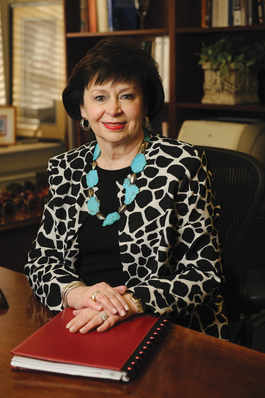 Dr. Milla Boschung Dr. Milla Boschung For more than a hundred years, The University of Alabama has been known as the “Capstone” of higher education, a designation coined by President G.H. Denny, for whom Denny Chimes and Bryant-Denny Stadium are named. Capstone means high point or peak, and Dr. Denny saw the University — the state’s largest —as the crowning achievement of Alabama, providing opportunity for economic development and cultural transformation. How do we, the College of Human Environmental Sciences, measure up to such a high calling? Not only are we the fastest-growing division on our campus, but we are also one of the largest HES schools in the nation. Our graduates are leaders in their fields wherever they go. Our groundbreaking research leads to practical application that changes the lives of thousands of individuals and families and fosters more effective public policy. Our students, faculty and alumni are known for their generous spirit of service throughout their communities. These contributions are exemplified in this issue of Reunion magazine — from our alliance with the National Institutes of Health to establish an addictions minor, to research that advances our knowledge of the role of sleep in our lives, to our teaching of cutting-edge solutions for cyber security. Also featured are the contributions of world-renowned artist Frank Fleming at our child development center and those of our own artist-in-residence Beverly Kissinger in her long career at CHES. And the campus visit of Robert Craft, mayor of Gulf Shores, Alabama, offered the kind of real-world exposure we frequently provide for our students. Finally, I want to add that throughout its history, CHES has never had a more ardent and articulate champion than Dr. Mary Crenshaw, who served as our dean for 15 years. Dean Crenshaw passed away last October, but her legacy will live long here. She inspired thousands of our faculty and students to reach for that crowning achievement, and, wherever they went, to remain exemplary representatives of the Capstone — a noble aspiration for all of us. |
Reunion MagazineEnjoying staying up to date on CHES, alumni, students, faculty, and friends. ArchivesCategories
All
|
| Reunion Magazine | REUNION MAGAZINE |
